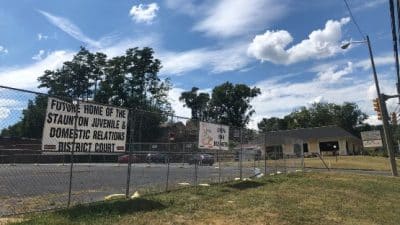
“The hope there is that we can start to pull together a consensus,” said Virginia Transportation Secretary Sean Connaughton, who convened a meeting of transporation leaders from Tennessee, West Virginia, Maryland and Pennsylvania on Wednesday in Salem.
Virginia is home to more than 40 percent of the mileage of Interstate 81 as it stretches from Tennessee in the south to upstate New York to the north. State leaders have been grappling with what to do about growing truck traffic along the corridor for going on two decades.
The multistate effort that is still very much in the beginning stages is taking a look at roads improvements and improvements to rail transportation along the corridor, though Connaughton cautioned in a teleconference with reporters after the meeting that rail isn’t necessarily the magical final solution. Only about 15 to 20 percent of freight traffic currently on I-81 can be diverted to rail, Connaughton said
“That’s an important part of the future for us on the corridor, but on the other hand, it just underscores that we still need to make capacity improvements, and we also have to deal with the current capacity regarding both traffic management and incident response,” Connaughton said.
The state is going to start a similar outreach effort that will be focused inward in the coming weeks. Connaughton said state officials will begin a series of meetings with local governments, planning districts, metropolitan planning organizations and the general public aimed at getting feedback and thoughts on how to move forward with improvements to the corridor.
The end goal to that process would be recommendations to the Commonwealth Transportation Board for funding for an I-81 improvement plan to be included in next year’s Six-Year Improvement Plan.
Funding is also a motivation to the multistate planning effort.
“One of the reasons we’re doing this now is we do believe we have a window of opportunity now that the federal transportation reauthorization bill probably won’t occur until sometime next year, at the earliest, that we can get all the states in the corridor to work together, that we could potentially provide a unified position in the reauthorization bill when the federal government finally moves forward on that,” Connaughton said.
Story by Chris Graham. Chris can be reached at [email protected].










